
Israeli airstrikes on Nasser Hospital in southern Gaza killed at least 20 people Monday, including five Palestinian journalists. Eyewitnesses say Israel carried out a “double-tap” strike on the hospital. A drone initially hit the hospital’s roof, killing one journalist setting up a live stream, and then another strike hit journalists and rescue workers who were responding to the initial strike. “Israel knew exactly who was there,” says Palestinian writer and analyst Muhammad Shehada. “Israel has killed 244 journalists, by far surpassing all 20 years of the war in Vietnam or all six years of the Second World War.”
Transcript
AMY GOODMAN: Israeli airstrikes on Nasser Hospital in southern Gaza have killed at least 20 people, including five Palestinian journalists. According to eyewitnesses, Israel carried out a double-tap strike on the hospital. A drone initially hit the hospital’s roof, killing one journalist setting up a live stream. Then another strike hit journalists and rescue workers who were responding to the initial strike. During a live broadcast, Al-Ghad TV filmed the second strike on the hospital.
AL-GHAD TV REPORTER: [translated] Just now, just now, the civil service is lost! Oh god! They’ve killed these people!
AMY GOODMAN: The journalists killed in the Israeli strike have been identified as Hussam al-Masri, a photojournalist with the Reuters news agency; Mohammad Salama, a photojournalist with Al Jazeera; Mariam Abu Daqqa, a freelancer who worked with the Associated Press; Moaz Abu Taha, a photographer; and Middle East Eye freelancer Ahmad Abu Aziz. At least 244 journalists and media workers have now been killed in Gaza over the past 23 months.
Today’s attack on Nasser Hospital came a day after Israeli forces killed at least 64 Palestinians, mostly in the north, as Israel moves to take over Gaza City and forcibly remove the city’s entire population of about 1 million people. Officials in Gaza say Israel has recently destroyed more than a a thousand buildings in the Zeitoun and Sabra neighborhoods of Gaza City.
Meanwhile, health officials in Gaza say 11 more Palestinians, including two children, have died from malnutrition over the past 24 hours. At least 300 Palestinians have starved to death. On Friday, the U.N. formally declared famine in the Gaza Strip.
For more, we go to Muhammad Shehada, writer and analyst from Gaza. He’s chief communications at Euro-Mediterranean Human Rights Monitor.
Muhammad, welcome back to Democracy Now!, under incredibly painful circumstances. What do you understand happened, with eyewitnesses talking about a double-tap strike on Nasser Hospital that killed at least five journalists, 20 people, about, altogether, with a focus on the fourth floor? The Reuters journalist was setting up a live stream on the roof when it happened.
MUHAMMAD SHEHADA: Well, basically, it started with a journalist at Nasser Hospital called Hatem Omar, who located and spotted an Israeli surveillance quadcopter drone. He took a picture, uploaded it an hour before the strike, and said, “There’s a quadcopter drone that is surveilling meticulously the area, so take cover. Watch out.”
Israel knew exactly who was there. They bombed the fourth floor with a precision strike, because that is the area where journalists would go to catch a signal for their eSIM cards, because Israel collapsed Gaza’s telecommunication infrastructure, so journalists rely on an electronic SIM card that catches a signal from Israeli telecom towers. So that’s why they have to go to higher places, high-rise buildings.
Once they bombed it the first time, they waited patiently until more journalists and rescue workers rushed to the scene. And once they saw them, they bombed them again, exactly at the moment that they were crowding to basically document the atrocities that unfolded there. So, it’s a precision double-tap strike that Israel unleashed to kill journalists specifically, in the area where they knew that they would be standing every single day to upload documentation of the genocide.
AMY GOODMAN: Can you talk about Israel’s response? They said they’re investigating.
MUHAMMAD SHEHADA: That’s the exact same response that they gave about Yaser Murtaja in 2018, when they murdered him with a sniper shot directly, despite wearing a “press”-marked vest. First they said he was Hamas. Then they said it was an accident. Then, when all of their lies were debunked repeatedly, they said, “We will investigate.” And we never heard anything about it again for the next seven years until this moment.
“Investigate” is Israel’s way of buying time. I have Israeli contacts in Israeli civil society, like Breaking the Silence and B’Tselem, that said that Israel previously was unwilling to investigate itself. At this stage, it is incapable of investigating itself, because the military is overfilled with religious Zionist extremists. It’s basically, the Israeli military that’s carrying out the genocide in Gaza is overstaffed with the most extreme Israeli settlers, particularly from the Hilltop Youth. And you wouldn’t expect those people to investigate their atrocities, let alone the people that were there before them. Israel’s investigations are basically the same sham that is there to buy time. That’s why B’Tselem decided many years ago to stop collaborating with any Israeli state investigation, because they said these are theater plays, performances, that is there to just whitewash Israeli atrocities on the ground, so it’s completely meaningless.
AMY GOODMAN: Can you tell us about the other journalists and their reporting? So, you have Hussam al-Masri, the photojournalist from Reuters news agency, who was setting up a live stream on the roof. And then there’s Mariam Abu Daqqa. She’s with AP, a freelancer with AP, a mom. She was doing profiles, especially of children in Nasser Hospital.
MUHAMMAD SHEHADA: So, Mariam, she’s a giant icon on her own. Basically, she’s a journalist, a mother. She recently donated her kidney to save a life, quietly. Her son is receiving medical treatment outside of Gaza, Ghaith. She is basically a very close friend of Razan al-Najjar,, the paramedic that was killed, again, in a targeted sniper shot during the Great March of Return in 2018. And Mariam was covering these demonstrations. At one point, she was broadcasting live when a buddy arrived to the hospital. She looked behind, and it turned out to be her own brother that was killed by Israel while marching barechested against Israel’s draconian blockade on Gaza, and collapsed in tears immediately. She lost another brother during the genocide.
She’s a neighbor of Mohammad Salama, the other journalist that was killed in their strike. And Mohammad recently got engaged, and he was preparing to get married. He’s a young journalist from the same area, Abasan, in Khan Younis, a village that Israel wiped out completely. They left nothing in there. And they bragged about it on camera. They took thorough documentation that Abasan was turned into a howling wilderness, and showed it to Gazans to basically shock them. Even in Israeli prisons, Ben-Gvir, the Israeli minister of security, he hung up a giant poster of Gaza being reduced to rubble, for Palestinian hostages to be — to see it every single day and realize that the genocide is going through.
The other journalists, Moaz Abu Taha and Hamza, both of them — none of the four journalists had anything to do with Hamas or militant activity. Nonetheless, you have Channel 14, an Israeli TV channel, that is now bragging and saying, “Yes, we bombed the Nasser Hospital twice. Yes, we killed those journalists. And yes, those journalists are terrorists. And that’s the end of the story.” So, in English, Israel is saying one thing: They’re saying it’s a mistake. In Hebrew, they’re bragging about it. They are delighting in the killing of those journalists.
Right now Israel has killed 244 journalists, by far surpassing all 20 years of the war in Vietnam or all six years of the Second World War. And you remember, Amy, in Vietnam, there were pictures like the napalm girl that turned public opinion around. There was the picture from Lebanon in 1982 of a girl with both of her arms wrapped in bandages, that made President Reagan call the Israeli prime minister and say, “This is a holocaust. You need to stop now.” But when it comes to Gaza, you don’t see that tipping point at all. No matter what Israel does, there is no tipping point for the international community, that’s empowering Israel’s genocide.
AMY GOODMAN: And let’s remember that well over 200 Palestinian journalists and media workers have been killed. You said, 244, Muhammad. The Israeli prime minister, the military does not allow in international journalists. Muhammad Shehada, I want to thank you very much for being with us, writer and analyst from Gaza, chief of communications at Euro-Mediterranean Human Rights Monitor.

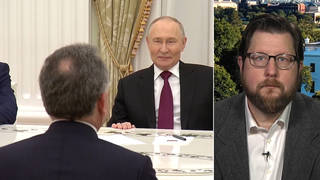
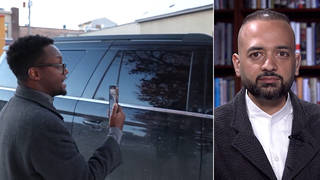
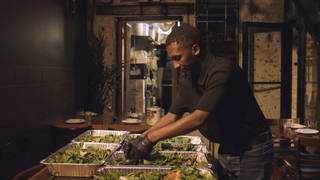

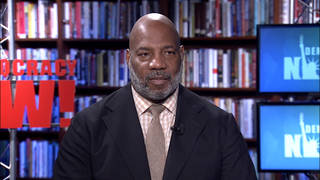
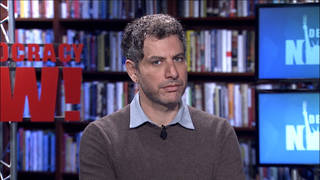
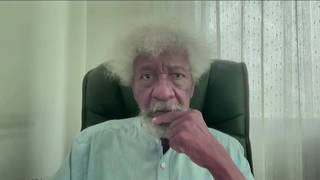
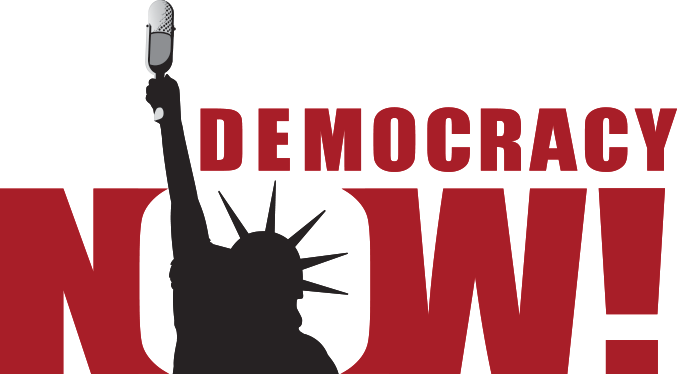
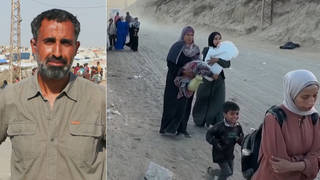
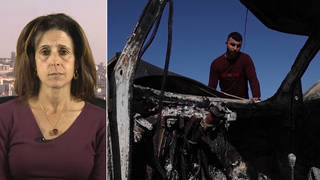
Media Options